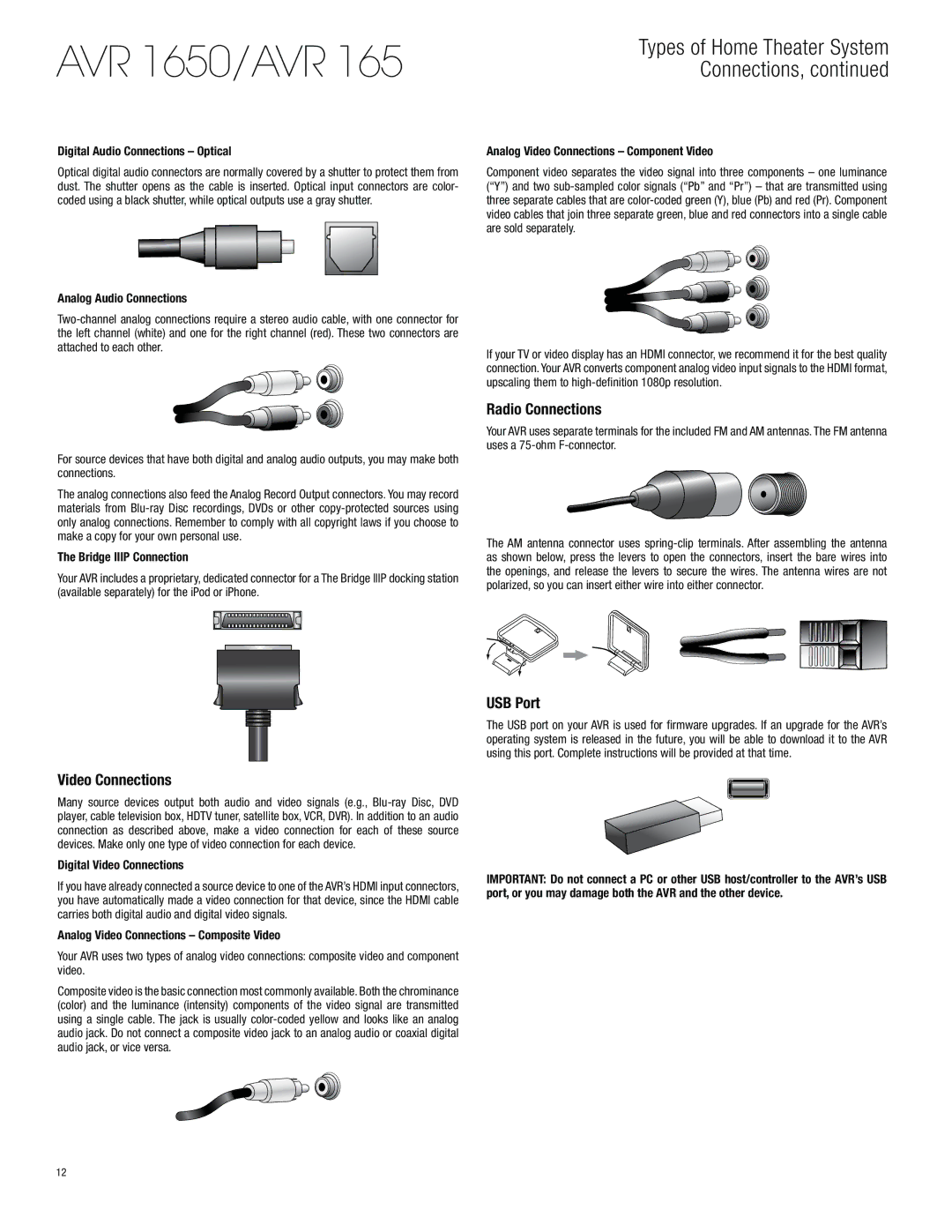
AVR 1650/AVR 165
Types of Home Theater System Connections, continued
Digital Audio Connections – Optical
Optical digital audio connectors are normally covered by a shutter to protect them from dust. The shutter opens as the cable is inserted. Optical input connectors are color- coded using a black shutter, while optical outputs use a gray shutter.
Analog Audio Connections
For source devices that have both digital and analog audio outputs, you may make both connections.
The analog connections also feed the Analog Record Output connectors. You may record materials from
The Bridge IIIP Connection
Your AVR includes a proprietary, dedicated connector for a The Bridge IIIP docking station (available separately) for the iPod or iPhone.
Analog Video Connections – Component Video
Component video separates the video signal into three components – one luminance (“Y”) and two
If your TV or video display has an HDMI connector, we recommend it for the best quality connection. Your AVR converts component analog video input signals to the HDMI format, upscaling them to
Radio Connections
Your AVR uses separate terminals for the included FM and AM antennas. The FM antenna uses a
The AM antenna connector uses
Video Connections
Many source devices output both audio and video signals (e.g.,
Digital Video Connections
If you have already connected a source device to one of the AVR’s HDMI input connectors, you have automatically made a video connection for that device, since the HDMI cable carries both digital audio and digital video signals.
Analog Video Connections – Composite Video
Your AVR uses two types of analog video connections: composite video and component video.
Composite video is the basic connection most commonly available. Both the chrominance (color) and the luminance (intensity) components of the video signal are transmitted using a single cable. The jack is usually
USB Port
The USB port on your AVR is used for firmware upgrades. If an upgrade for the AVR’s operating system is released in the future, you will be able to download it to the AVR using this port. Complete instructions will be provided at that time.
IMPORTANT: Do not connect a PC or other USB host/controller to the AVR’s USB port, or you may damage both the AVR and the other device.
12
